Background
I started at Peoplevox in November, with the responsibility of implementing the design thinking process at the company. The company was developing an all-in-one solution for a collaborative supply chain (CSC) management tool. The product itself was quite mature, but required a lot of UX and UI focus, as this had not been prioritised initially. My role was to implement the design thinking process, and try to embed a user-focused mentality within our work. I took on multiple projects to improve the CSC tool, all of my work is documented here on Google Drive.
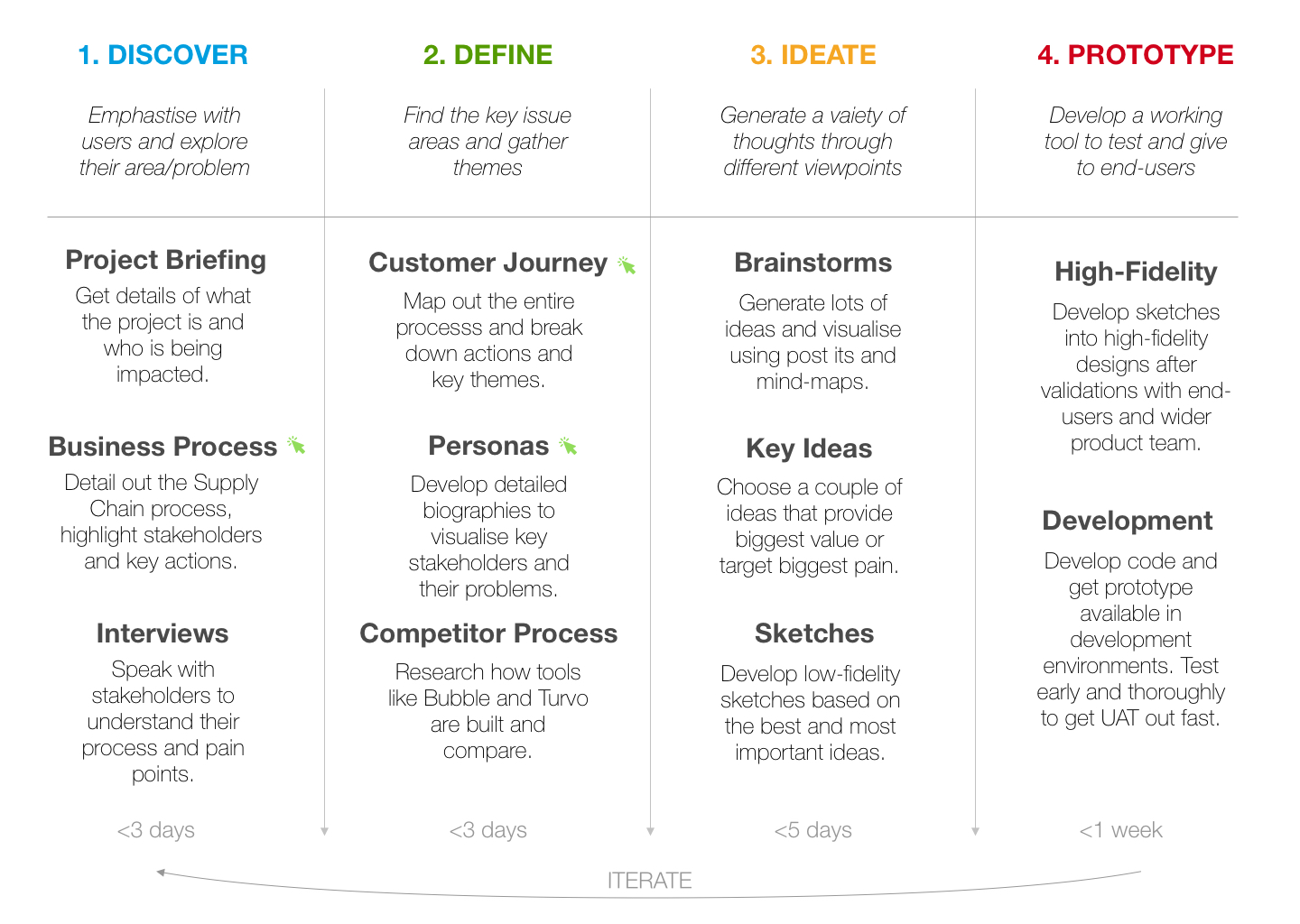
The Design Thinking Process, adapted for the company and the supply chain industry. This process was optimised for rapid development, with instances where client interviews were conducted on Monday and features were pushed out on Wednesday.
Design Links
As designers we always refer to our go-to websites and links. Whether it be for icons or design concepts, there can be lots of sites that are extremely helpful in the research stage of any project. I used a website called Zulu which is a space to bookmark all my links on their website, which allows me to move across devices and platforms easily. Below is an image of a board I created for this particular project, containing articles on fundamental design principles. You can sign up for Zulu here.
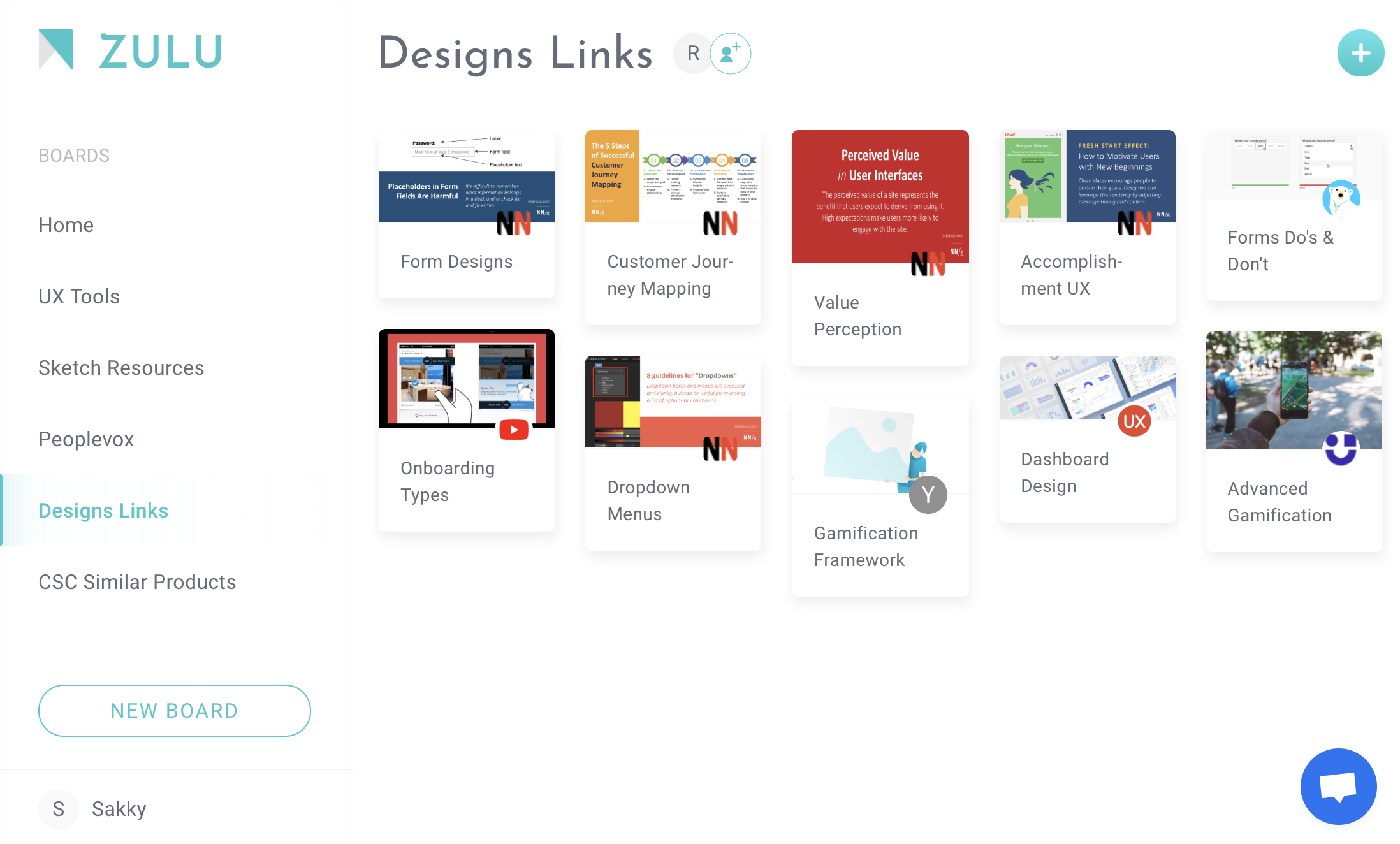
Discovery Phase
We began with a Project Briefing from the CEO, which was derived from his interactions with existing and potential clients. Taking his understanding of the issues in the supply chain space, I began to formulate the current business processes for the supply chain, predominantly relating one retail fashion client.
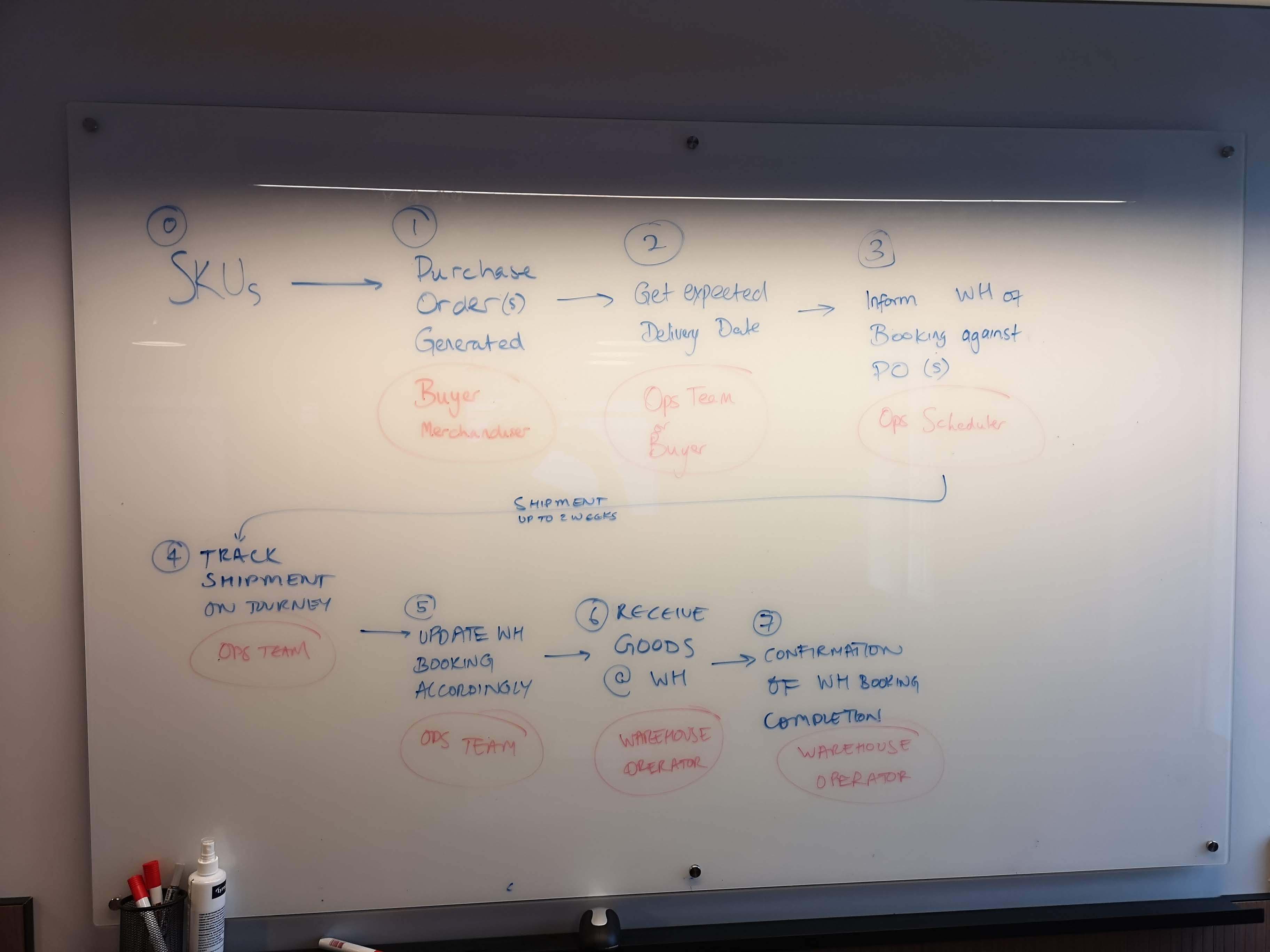
Many interviews had been conducted by the CEO with fashion retailers, but I interviewed an Operations Manager from the retail client and the findings are here.
Define Phase
After gathering the findings from the interview and business process discussions, I began to develop a thorough customer journey. I highlighted in depth the importance on the inbound booking management with warehouses, which was found to be a key issue for the client. This became one of our problem statements for the project.

Personas were also developed for the stakeholders involved within the customer journey map, the operations manager being one of the most important personas. These can be found here.
As there was an existing system (1 year in development), I developed a deck of issues that were present in terms of the UX and UI in the system. The UX breakdown can be found here, and the UI breakdown here.
On the individual UX and UI breakdowns, I took the existing system experience and critiqued it against what would be expected of a modern web platform. This critique came alongside analysing competitors in the supply chain management field, one of whom was Flexport, which has a very clean and informative UI.
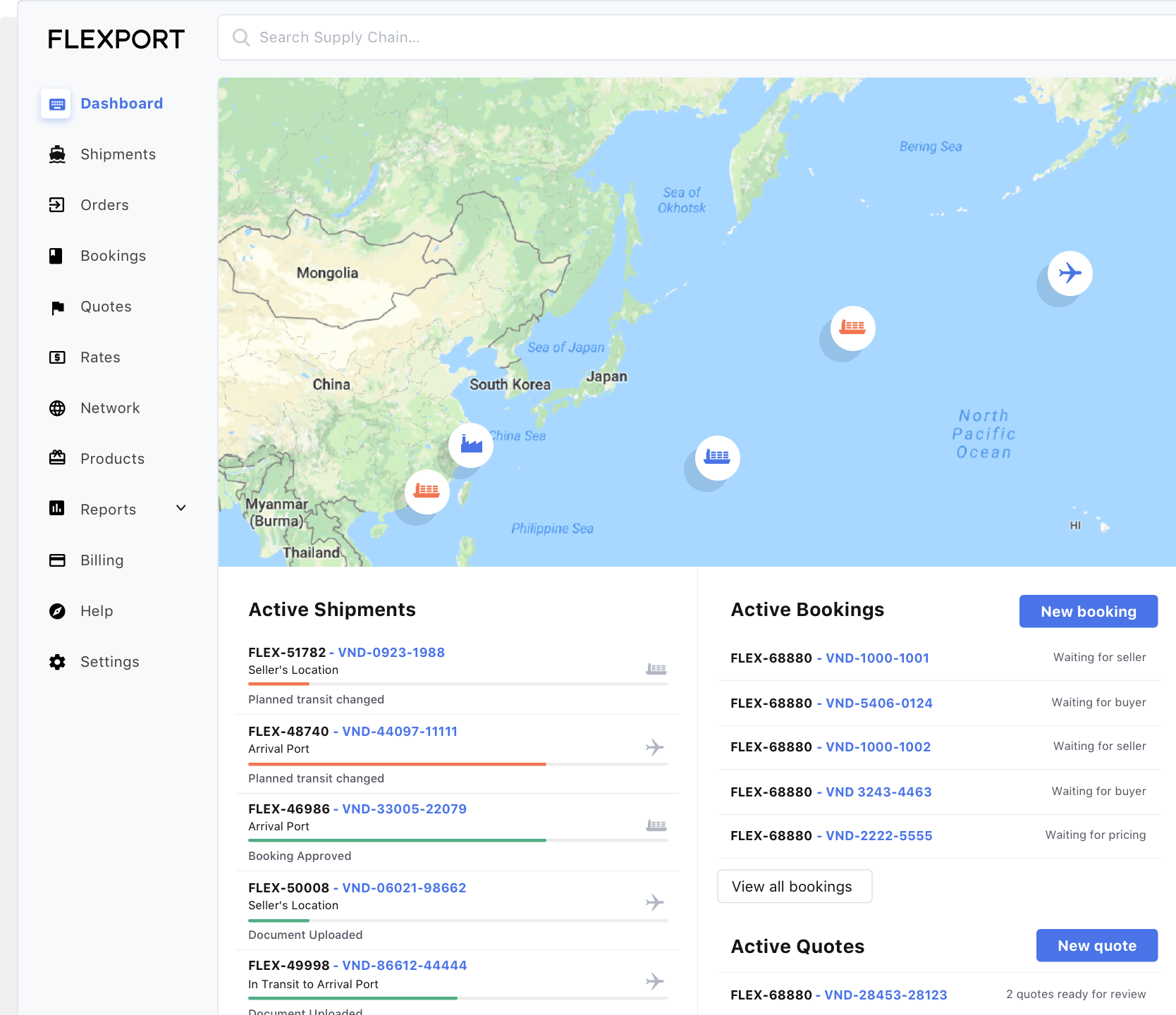
Ideation Phase
After reviewing the personas and customer journey with the users, I began to brainstorm how to manage a booking. In collaboration with the Product Manager, we developed ideas around the managing, updating and key information of a booking
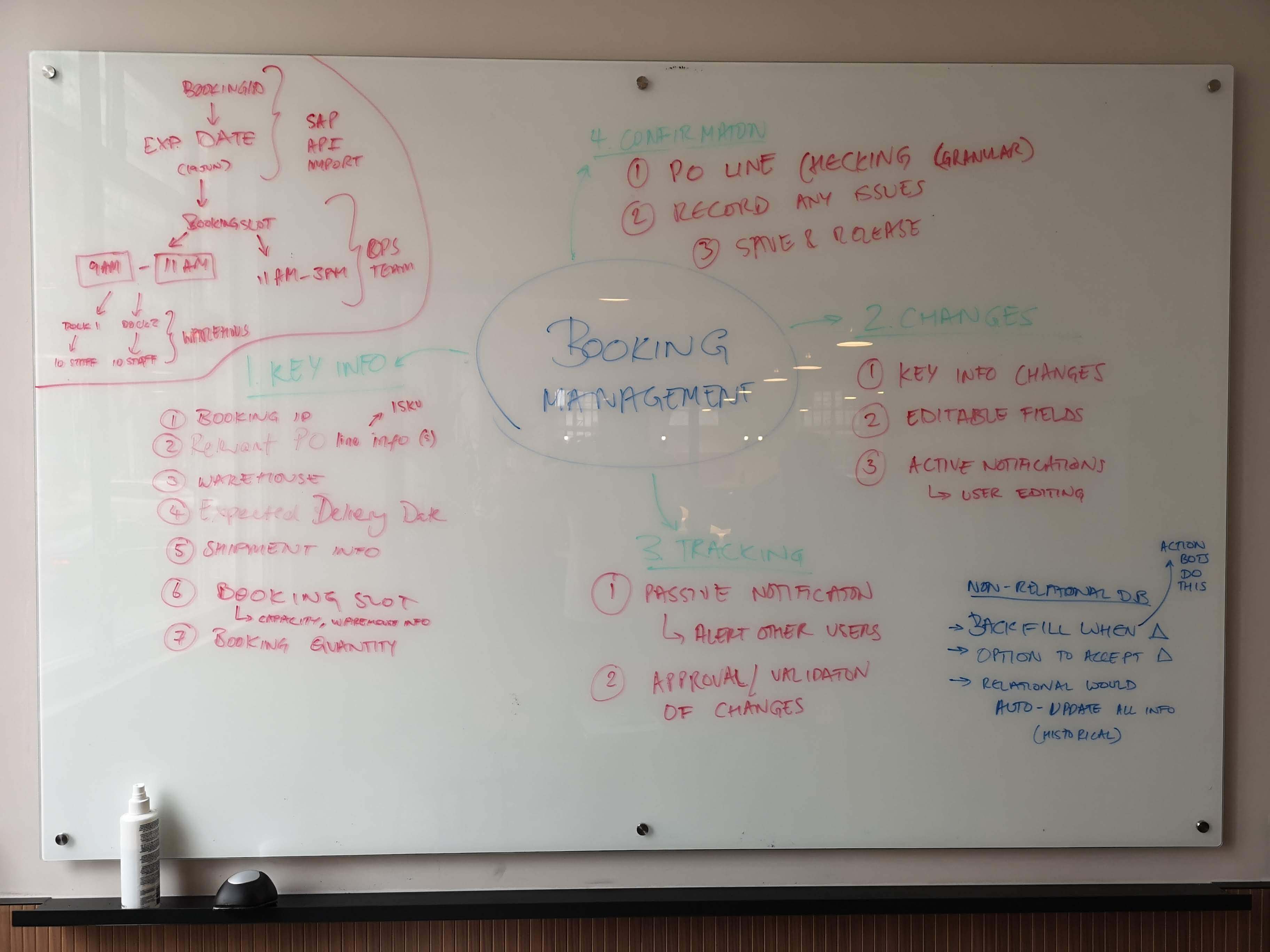
After brainstorming ideas within the Product team, we developed the overall strategy together (developers, managers and designers). We came to the conclusion that developing an easy initial booking interface on our website would be a fantastic way to initiate contact with the retail users, and then eventually generate a network effect by inviting their respective suppliers.
High Fidelity & Prototyping Phase
I began working on sketches for the initial booking, with feedback from users (predominantly the Operations Manager) and internally. I began developing high fidelity designs on Sketch, and then prototyping the flow of the booking form.
The sketch prototype can be accessed here, hotspots are available on each screen, allowing for easy navigation, similar to typical web interactions.
